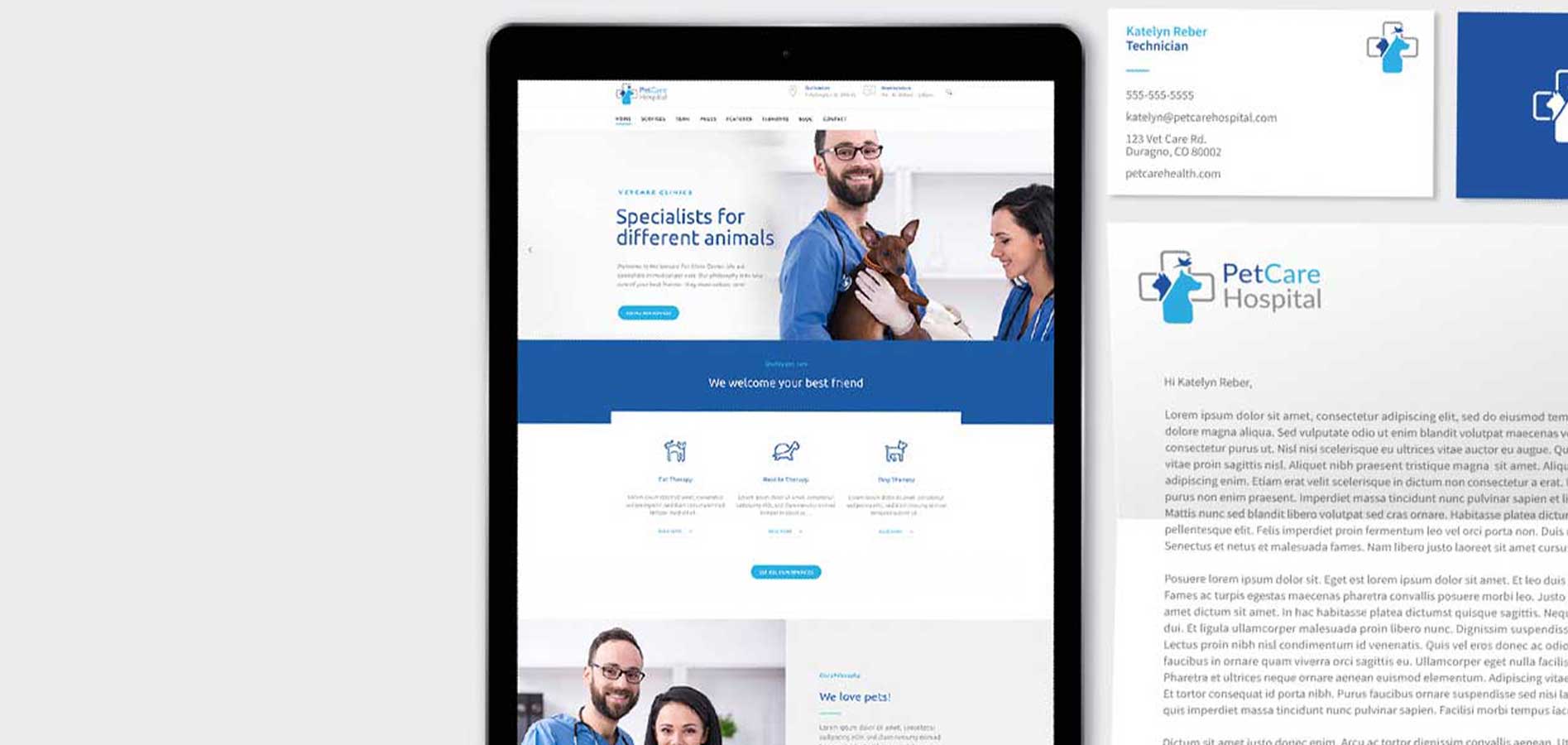How many veterinary practices are within 25 miles of yours? As your competition grows, so does your need to stand apart and show pet owners why your practice is the best option for them. But, where do you start? Here are a few ways to help your veterinary practice stand out in a crowd.
1: Build a strong website
Ditch your website that was thrown together on Squarespace and instead hire a professional. A website built by a company that specializes in the veterinary industry is worth the investment. Some top veterinary-specific website providers include:
- InTouch Practice Communications
- Simply Done Tech Solutions
- Digital Empathy
- Beyond Indigo
- And many others!
They will know how to make your website stand out from other veterinary practice sites with advice and services that will improve your search engine optimization (SEO), and your ranking on Google and other search engines. A veterinary-specific website company will be able to create a clean, professional design, with content that attracts pet owners. They’ll also make your website mobile-friendly and ensure it is easy to navigate.
When faced with a cluttered, clunky website that they can’t browse on their phone, many pet owners will wonder what else about your practice is outdated and not user-friendly, and they’ll choose the practice that has the beautiful, updated, easy-to-use website instead.

Other ways to beef up your website:
- Create a blog page (and contribute to it at least monthly). With so much pet care misinformation floating around the internet—like that a warm, dry nose means your dog is sick—your clients can always find a reputable source in your well-rounded veterinary blog section. (Here’s a blog post topic for you: “Common Pet Health Myths Debunked.” It’s sure to be a hit!) Some website providers offer a blog as an added service.
- Add a section for forms and policies. When people are looking for a veterinary practice, they often wonder about the cost of services. Be open and transparent about your payment policies. List your accepted payment types, and whether you accept any third-party financing options, like CareCredit or Scratchpay. Slip your client check-in and patient history forms into this section as well, so your pet appointment confirmations and reminders can include a link that directs clients to fill them out ahead of time.
- Keep it updated! Set a quarterly calendar reminder to review your site and send updates to your design team. Be sure to include new team members, new services offered, special accreditation or CE completed by your team, exclusive products or promotions, and updated business hours.
- Promote your app and online pharmacy. Include links to your veterinary practice’s app and online veterinary pharmacy in a prominent place on your home page, as well as the top navigation, so website visitors can access them from any page on your site.
2: Be active on your social media pages
When planning your social media strategy, keep the 80-20 rule in mind. About 80% of your content should be personal—think fun, behind-the-scenes photos of patients (with client permission, of course) and your team in action. And 20% should be educational—“Check out our new dental radiography machine! Read our latest blog post to find out why dental X-rays are so important for your pet…”.
Post regularly on your social media pages. Don’t be a power poster one week, then completely ignore your pages for the next three weeks. Ideally, schedule your posts to be published automatically two or three times a week. And, if you want to increase your chances of showing up in your clients’ feeds as they scroll, be prepared to pay to boost some of your posts. It doesn’t take much money to make a difference.
Lost when it comes to social media? Our go-to social media expert (who also happens to be a veterinarian) is Dr. Caitlin DeWilde of The Social DVM!

3: Evaluate your communication intelligence
Take a good look at how you communicate with your clients. If you only offer phone calls and face-to-face chats with your CSRs as ways to communicate with your team, clients will likely look for a more tech-savvy practice that suits their needs. Allow clients to chat with you through a practice app, text your practice, and email your practice—expanding their communication options will improve their experiences and help to keep them loyal to your practice.
With a large portion of today’s communication taking place in virtual channels (e.g., texts, social media messages, app notifications, emails, etc.), it helps to build client loyalty if you can meet your clients where they prefer to communicate.
Use your digital communication tools to allow busy pet owners to request curbside pick-up and drop-off. And, give clients the ability to request appointments or prescription refills online when it’s convenient for them, which may not be during your standard business hours. Encourage clients to take advantage of your online pharmacy that ships those 50-pound bags of food we all hate to schlep around straight to their front door, or to schedule autoship for their pet’s parasite prevention so they never miss a dose (and you keep business in-house!).

4: Make your service personal
While it’s much easier to remember a pet’s face and name than the owner’s, make an effort to ensure your customer service has a personal touch. If you can, add notes to your veterinary practice management software for internal use only to help remember important client details. For example, make a note of a client’s favorite doctor/technician duo, or that Mrs. Smith just had hip surgery and would appreciate help to and from her car.
If you’re a Vet2Pet user, take advantage of the internal note feature that follows a client throughout the dashboard, ensuring your team knows how to best serve that client.
In addition to your client notes, add notes about the pet. As more veterinary practices are embracing low-stress and Fear Free handling methods, keeping notes on a pet’s favorite treats and preferred restraint methods will help make your job easier. Plus, your client will notice and appreciate that you remember that Fido loved his Easy Cheese from the last visit that allowed you to nab that blood sample for a heartworm test without a muzzle.
5: Keep clients engaged
Do your clients only think of your practice when their pet is sick? If so, make an effort to ensure your clients remain engaged by seeing your hospital name more frequently.
Send push notifications and emails about seasonal pet health care tips, like springtime allergies and wintertime frostbite. Highlight your latest blog post on social media and promote it on your website. With the Vet2Pet platform, you can use the various templates preloaded with suggested content available to remain in contact with your clients, whether it’s a quick note about pet dental health or raising awareness about geriatric screening tests. Even better, you can target these messages to the right audience (senior dogs, cats only, specific breeds, etc.), and schedule these communications to go out in advance so you won’t forget when the appropriate day arrives.
Additionally, you can keep your clients in the loop by sending notifications about holiday closures and changes in business hours. Your clients will appreciate the warning before they drive over when your hospital is closed. With the Vet2Pet platform, you can target your messages to clients with a scheduled veterinary appointment on a specific day, which is helpful if you want to communicate last-minute changes for the day or remind everyone to complete their pre-appointment check-in form on your website.
Offering your clients a practice app that allows them to schedule appointments, request prescription refills, and chat with your team, all from their smartphone, is an excellent way to stand out from the crowd. Contact us to learn more about how Vetsource can help your vet practice engage with clients and stand out from the crowd.



